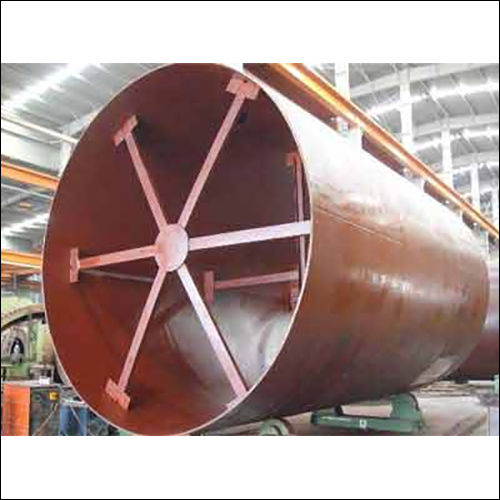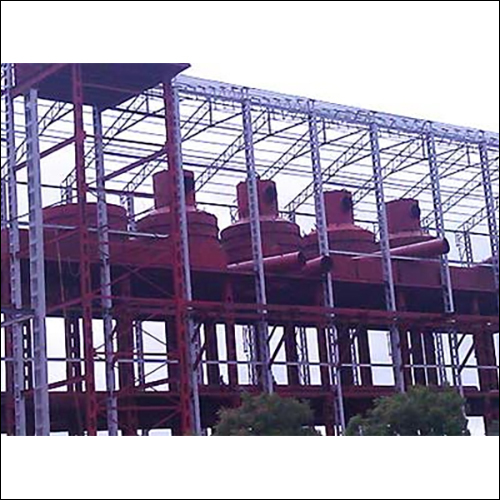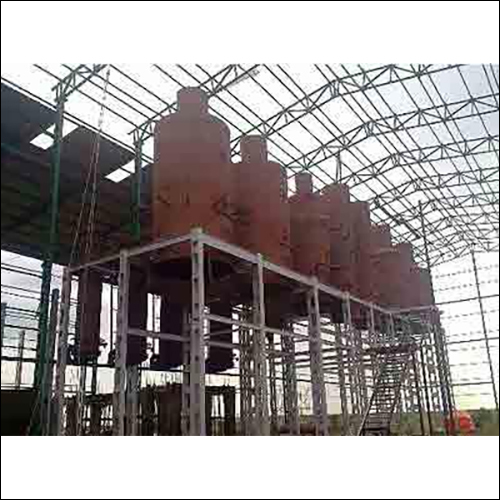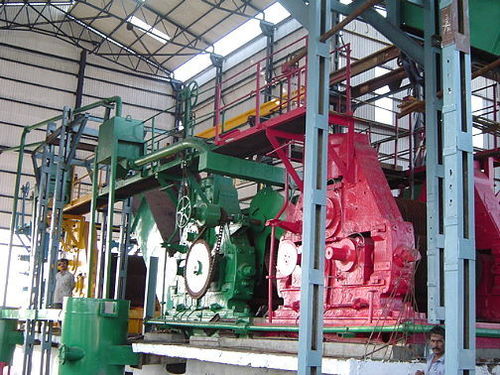Rotary Kilns
Price 1000000 INR/ Piece
Rotary Kilns Specification
- Shape
- Horizontal cylindrical shaped
- Phase
- 3 Phase
- Product Type
- Rotary Kilns
- General Use
- heat solids to the point of chemical reaction through dry or wet process
- Material
- Steel Alloy
- Type
- Other
- Computerized
- No
- Automatic
- Yes
- Touch Screen
- No
- Control System
- PLC Control
- Surface Treatment
- Polishing
- Feature
- High Performance, Simple Control, High Efficiency
- Color
- Brown
- Warranty
- 1 Year
Rotary Kilns Trade Information
- Minimum Order Quantity
- 1 Piece
- Supply Ability
- 4 Pieces Per Month
- Delivery Time
- 15 Days
About Rotary Kilns
- Rotary kiln has cylindrical shell supported on two/more tyre stations on supporting rollers.
- One tyre comes fixed axially through set of thrust rollers to counter thrust load at the time of kiln movement and thus preventing shifting kiln from its axis.
- Drum assembly along with tyres rotates making use of girth gear and pinion arrangement.
- Common prime movers used are gear reducers to reduce speed or increase torque as needed.
- Girth gears are mounted on tangential spring plates attached to shell to compensate thermal expansion.
- Driving pinion comes mounted on output shaft of worm/helical gear unit.
- Use of several kinds of bearings on kiln with high loads.
- Shell diameter and length are designed to suit specific products and production capacities.
- Suitable sealing arrangement prevents ambient air from entering process.
- Suitable refractory lining provides working as high temperature and abrasive material wear resistant lining.
- Firing system works as an important part of rotary kiln system and optimizes combustion of fuels to release heat in kiln.
- The cyclone type dust collection arrangement finds use as a pollution control measure.
- Cement
- Sponge iron
- Refractories
- Metals
- Construction materials
- Petroleum coke
- Alumina
- Gypsum
Durable Polished Steel Alloy Construction
The rotary kiln features a meticulously polished surface treatment, ensuring superior resistance to wear and corrosion. Crafted from high-quality steel alloy, it is built to withstand the demanding conditions of industrial applications, maintaining performance over extended use. This durability translates to lower maintenance requirements and longer operational life.
Efficient Automated Operation
Designed for simplicity, the kilns automated control is facilitated by a PLC system, enabling intuitive management without complicated touch screens. This not only increases user convenience but also supports continuous, dependable operation, boosting productivity in manufacturing and processing environments.
FAQs of Rotary Kilns:
Q: How does the rotary kilns PLC control system simplify operation?
A: The rotary kiln is equipped with a user-friendly PLC control system that enables automated operation. This system allows users to manage kiln parameters and processes efficiently, removing the need for complex manual adjustments and minimizing operational errors.Q: What industrial applications can this rotary kiln be used for?
A: This rotary kiln is suitable for a wide range of industrial applications, such as processing minerals, manufacturing cement, and treating metals. Its high-efficiency capabilities and robust construction make it ideal for environments requiring consistent heat treatment and material handling.Q: When should maintenance be performed on the rotary kilns polished surface?
A: Routine maintenance should be performed according to manufacturer guidelines, typically at regular intervals depending on usage intensity. The polished steel alloy surface reduces the frequency of maintenance by resisting wear and corrosion, but inspections and minor servicing help ensure optimal performance.Q: Where is this rotary kiln manufactured and exported from?
A: This rotary kiln is proudly manufactured, supplied, and exported from India, ensuring adherence to rigorous quality standards and providing reliable solutions to industries worldwide.Q: What is the process of installing the rotary kiln in an industrial facility?
A: Installation involves securing the kiln at the designated site, connecting it to a three-phase power source, and integrating its PLC control system. Manufacturer instructions guide through assembly, setup, and initial calibration to ensure safe and effective operation.Q: What are the benefits of the kilns automatic operation feature?
A: Automatic operation streamlines industrial workflow by enabling continuous processing while reducing manual intervention. This increases overall efficiency, minimizes human error, and allows operators to focus on other critical tasks, thereby improving productivity and safety.

Price:
- 50
- 100
- 200
- 250
- 500
- 1000+
More Products in Process Equipment Category
Travelling Grate Boilers
Minimum Order Quantity : 1 Piece
General Use : Process and Power applications to generate high steampressure.
Feature : High Efficiency, Stable Operation, High Performance
Voltage : 220 Volt (v)
Computerized : No
Material Handling Equipment
Price 50000 INR / Piece
Minimum Order Quantity : 1 Piece
General Use : Material Handling
Feature : High Efficiency, Stable Operation, High Performance
Voltage : 220 Volt (v)
Computerized : No
Multiple Effect Evaporators
Price 500000 INR / Piece
Minimum Order Quantity : 1 Piece
General Use : pharmaceutical, textile, paper and others
Feature : High Efficiency, Stable Operation
Voltage : 220 Volt (v)
Computerized : No
Cane Crusher Mills
Price 500000 INR / Piece
Minimum Order Quantity : 1 Piece
General Use : Sugar Mill
Feature : High Efficiency, ECO Friendly
Voltage : 220 Volt (v)
Computerized : No

 Send Inquiry
Send Inquiry






 English
English Spanish
Spanish French
French German
German Italian
Italian Chinese (Simplified)
Chinese (Simplified) Japanese
Japanese Korean
Korean Arabic
Arabic Portuguese
Portuguese